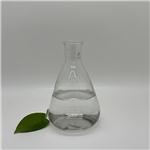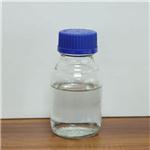- 1-Decanethiol
-

- $0.00 / 200KG
-
2024-10-31
- CAS:143-10-2
- Min. Order: 1KG
- Purity: 99%
- Supply Ability: 500000kg
- 1-Decanethiol
-

- $25.00 / 1kg
-
2024-10-25
- CAS:143-10-2
- Min. Order: 1kg
- Purity: 0.99
- Supply Ability: 20 tons
- 1-Decanethiol
-

- $15.00 / 1KG
-
2021-07-02
- CAS:143-10-2
- Min. Order: 1KG
- Purity: 99%+ HPLC
- Supply Ability: Monthly supply of 1 ton
|
| | 1-Decanethiol Basic information |
| | 1-Decanethiol Chemical Properties |
| Melting point | ?26 °C (lit.) | | Boiling point | 114 °C/13 mmHg (lit.) | | density | 0.824 g/mL at 25 °C (lit.) | | refractive index | n20/D 1.458(lit.) | | Fp | 209 °F | | storage temp. | 2-8°C | | pka | 10.50±0.10(Predicted) | | form | clear liquid | | Specific Gravity | 0.841 | | color | Colorless to Almost colorless | | Water Solubility | Insoluble in water. | | Sensitive | Air Sensitive/Stench | | BRN | 1735223 | | Exposure limits | NIOSH: Ceiling 0.5 ppm(3.6 mg/m3) | | LogP | 5.518 (est) | | CAS DataBase Reference | 143-10-2(CAS DataBase Reference) | | NIST Chemistry Reference | 1-Decanethiol(143-10-2) | | EPA Substance Registry System | 1-Decanethiol (143-10-2) |
| Hazard Codes | Xi | | Risk Statements | 36/37/38 | | Safety Statements | 26-36 | | RIDADR | UN 3334 | | OEL | Ceiling: 0.5 ppm (3.6 mg/m3) [15-minute] | | WGK Germany | 3 | | F | 13 | | Hazard Note | Irritant/Stench/Air Sensitive | | TSCA | Yes | | HS Code | 29309090 |
| | 1-Decanethiol Usage And Synthesis |
| Chemical Properties | Liquid | | Uses | 1-Decanethiol is used to improve charge injection by creating a monolayer of this material on gold source-drain electrode surfaces for field-effect transistors (FETs). It is also used in the study of self-assembled monolayers. | | General Description | 1-Decanethiol is an alkanethiol that forms a self-assembled monolayer(SAM) and it can be coated as a protective coating on a variety of substrates. | | Reactivity Profile | 1-Decanethiol is incompatible with oxidizing agents, strong acids and bases, alkali metals, and nitric acid. May react with water, steam or acids to produce toxic and flammable vapors. Reacts violently with strong oxidizing agents such as calcium hypochlorite(Ca(OCl)2) forming toxic fumes of SOx. Will react with hydrides to form flammable H2 gas. May react with halogenated hydrocarbons to yield hydrogen halides. Reacts exothermically with aldehydes. May mit highly toxic fumes of SO when heated to decomposition. |
| | 1-Decanethiol Preparation Products And Raw materials |
|